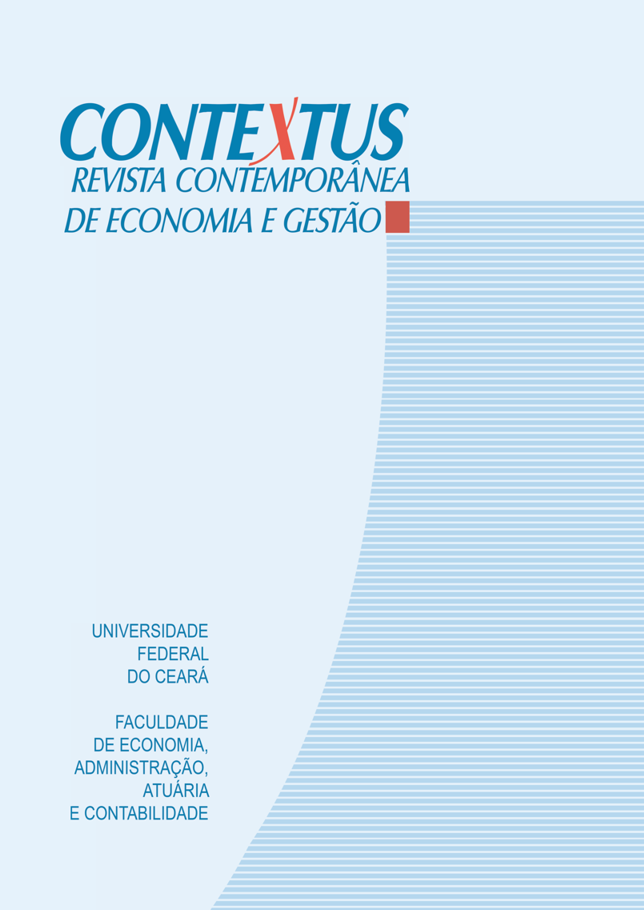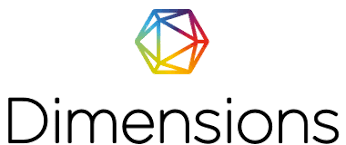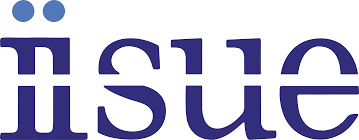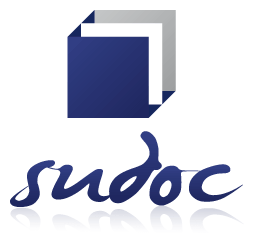Calidad de vida en el teletrabajo, rediseño del trabajo y bienestar en el trabajo de profesores de la enseñanza pública del Distrito Federal
DOI:
https://doi.org/10.19094/contextus.2022.71500Palabras clave:
afectos en el trabaljo, rediseño del trabajo, COVID-19, calidad de vida en el trabajo, trabajo remotoResumen
Este estudio testó los impactos de las percepciones de la calidad de vida en el teletrabajo y del rediseño del trabajo en el bienestar laboral de profesores públicos. Una muestra de 184 profesores contestó un cuestionario con escalas previamente validadas em Brasil. Análisis factoriales confirmatorias y modelaje por ecuaciones estructurales se han llevado a cabo. Las percepciones de la calidad de vida en el teletrabajo y del rediseño del trabajo predijeron el bienestar y contribuyeron a la investigación de brechas en la literatura organizacional y del trabajo. El diagnóstico demuestra las vivencias de profesores en trabajo remoto y evidencia las relaciones entre las variables abarcadas en un contexto de trabajo en transformación estimulado por la pandemia de la COVID-19.
Citas
Almarshad, S. O. A. (2015). Measurement scale for evaluating quality of work life: conceptualization and empirical validation. Trends in Applied Sciences Research, 10(3), 143-156. https://doi.org/10.3923/tasr.2015.143.156
Andrade, L. L. S., Pantoja , M. J., & Figueira, T. G. (2020). Desenvolvimento de um instrumento de medida de qualidade de vida no teletrabalho. XLIV Encontro da Anpad - EnANPAD, Maringá, Brasil, 44. http://www.anpad.org.br/abrir_pdf.php?e=MjkxNDY=
Argyle, M. (1999). Causes and correlations of happiness. In D. Kahneman, E. Diener & N. Schwarz (Eds), Well-being: The foundations of hedonic psychology (pp. 353-373). New York: Russel Sage Foundations.
Arruda, E. P. (2020). Educação remota emergencial: Elementos para políticas públicas na educação brasileira em tempos de Covid-19. Em Rede: Revista de Educação a Distância, 7(1), 257-275. https://www.aunirede.org.br/revista/index.php/emrede/article/view/621/575
Carnevale J. B., & Hatak, I. (2020). Employee adjustment and well-being in the era of COVID-19: Implications for human resource management. Journal of Business Research, 116, 183-187. https://doi.org/10.1016/j.jbusres.2020.05.037
Cohen, J. (1992). A power primer. Psychological Bulletin Journal, 112(1), 155-159. https://www.researchgate.net/publication/49619430_A_Power_Primer
Comrey, A. L., & Lee, H. B. (1992). A first course in factor analysis. (2 ed.). Psychology Press.
Demerouti, E. (2014). Design your own job through job crafting. European Psychologist, 19(4), 237-247. https://doi.org/10.1027/1016-9040/a000188
Demo, G., & Paschoal, T. (2016). Well-Being at Work Scale: exploratory and confirmatory validation in the USA. Paidéia, 26(63), 35-43. https://doi.org/10.1590/1982-43272663201605
Devotto, R. P., & Wechsler, S. M. (2019). Job crafting interventions: systematic review. Trends in Psychology, 27(2), 371-383. https://doi.org/10.9788/tp2019.2-06
Devotto, R. P., & Machado, W. L. (2017). Job crafting: Uma revisão da produção científica internacional. Psico-USF, 22(3), 413-423. https://doi.org/10.1590/1413-82712017220303
Devotto, R. P. de., & Machado, W. L. (2020). Evidências de validade da Versão Brasileira do Job Crafting Questionnaire. Psico-USF, 25(1), 39-49. https://doi.org/10.1590/1413-82712020250104
Devotto, R. P., Freitas, C. P. P., & Wechler, S. M. (2020). O papel do redesenho do trabalho na promoção do flow e do bem-estar. RAM. Revista de Administração Mackenzie, 21(1). https://doi.org/10.1590/1678-6971/eramd200113
Ferreira, M. C. (2017). Qualidade de vida no trabalho. Uma abordagem centrada no olhar dos trabalhadores. (3 ed.). Brasília: Paralelo 15.
Ferreira, M. C., & Falcão, J. T. R. (2020). Work in the context of COVID-19 pandemic, mental health, and quality of work life: essential guidelines. In M. Moraes (Ed.). The impacts of the pandemic on workers and their work relationship (pp. 23-30). Porto Alegre: Artmed.
Field, A. (2009). Descobrindo a estatística usando o SPSS. (2 ed.) Porto Alegre: Artmed.
Filardi, F., Castro, R. M., & Zanini, M. T. F. (2020). Vantagens e desvantagens do teletrabalho na administração pública: Análise das experiências do Serpro e da Receita Federal. Cadernos EBAPE.BR, 18(1), 28-46. https://doi.org/10.1590/1679-395174605
Hair, J. F., Black, W. C., Babin, B. J., Anderson, R. E., & Tatham, R. L. (2009). Análise multivariada de dados. Porto Alegre: Bookman Editora.
Hauff, S., Guerci, M., & Gilardi, S. (2020). Well-being-oriented HRM configurations: diffusion, contingencies, and outcomes. Evidence-based HRM, 8(3), 253-271. https://doi.org/10.1108/EBHRM-09-2019-0080
Horta, P., Demo, G., & Roure, P. (2012). Políticas de gestão de pessoas, confiança e bem-estar: Estudo em uma multinacional. Revista de Administração Contemporânea, 16(4), 566-585. https://doi.org/10.1590/S1415-65552012000400005
Kline, R. B. (2015). Principles and practice of structural equation modeling (4 ed.) New York: Guilford publications.
Konradt, U., Schmook, R., & Malecke, M. (2000). Impacts of telework on individuals, organizations and families: A critical review. International Review of Industrial and Organizational Psychology, 15, 63-99.
Kowalski, T. H. P., & Loretto, W. (2017). Well-being and HRM in the changing workplace. The International Journal of Human Resource Management, 28(16), 2229-2255. https://doi.org/10.1080/09585192.2017.1345205
Lazazzara, A., Tims, M., & de Gennaro, D. (2020). The process of reinventing a job: A meta–synthesis of qualitative job crafting research. Journal of Vocational Behavior, 116(b). https://doi.org/10.1016/j.jvb.2019.01.001
Martel, J. P., & Dupuis, G. (2006). Quality of work life: Theoretical and methodological problems, and presentation of a new model and measuring instrument. Social Indicators Research, 77, 333-368. https://doi.org/10.1007/s11205-004-5368-4
Nangov, R., & Indrianti, S. Y. (2018). Psychological capital, work well-being, and job performance. International Journal of Engineering & Technology, 7(4.9), 63-65. https://doi.org/10.14419/ijet.v7i4.9.20617
Neiva, E. R., Macambira, M. O., & Ribeiro, E. M. B. A. (2020). Práticas de gestão, bem-estar e comportamento de apoio. Revista de Administração Mackenzie, 21(1). https://doi.org/10.1590/1678-6971/eramd200098
Organização Internacional do Trabalho. (2016) Estrés en el traba¬lho: Un recto colectivo. https://www.ilo.org/public/libdoc/ilo/2016/490658.pdf
Paschoal, T., & Tamayo, A. (2008). Construção e validação da escala de bem-estar no trabalho. Avaliação Psicológica, 7(1), 11-22. http://pepsic.bvsalud.org/scielo.php?script=sci_arttext&pid=S1677-04712008000100004
Paschoal, T., Torres, C. V., & Porto, J. B. (2010). Felicidade no trabalho: Relações com suporte organizacional e suporte social. Revista de Administração Contemporânea, 14(6), 1054-1072. https://doi.org/10.1590/S1415-65552010000700005
Portaria n° 133, de 03 de junho de 2020. Sistema Integrado de Normas Jurídicas do DF. http://www.sinj.df.gov.br/sinj/Norma/d34d4d35166146009f3f852494ec2b94/Portaria_133_03_06_2020.html
Rethinam, G. S., & Ismael, M. (2008). Constructs of quality of work life: a perspective of information and technology professionals. European Journal of Social Sciences, 7(1), 58-70.
Salganik, M. J., & Heckathorn, D. D. (2004). Sampling and estimation in hidden populations using respondent-driven sampling. Sociological Methodology, 34(1), 193-240. https://doi.org/10.1111/j.0081-1750.2004.00152.x
Schaufeli, W. B. (2012). Work engagement: What do we know and where do we go? Romanian Journal of Applied Psychology, 14(1), 3-10. https://www.researchgate.net/publication/230580677_Work_Engagement_What_Do_We_Know_and_Where_Do_We_Go_Work_Engagement_in_Everyday_Life_Business_and_Academia
Slemp, G. R., Kern, M. L., & Vella-Brodrick, D. A. (2015). Workplace well-being: The role of job crafting and autonomy support. Psychology of Well-Being Theory Research and Practice, 5(1), 1-17. 10.1186/s13612-015-0034-y
Tabachnick, B. G., & Fidell, L. S. (2019). Using multivariate statistics. New York: Harper & Row Collins College Publishers.
Tetrick, L. E., & Winslow, C. J. (2015). Workplace stress management interventions and health promotion. Annual Review of Organizational Psychology and Organizational Behavior, 2, 583-603. https://doi.org/10.1146/annurev-orgpsych-032414-111341
Tims, M., Bakker, A. B., & Derks, D. (2013). The impact of job crafting on job demands, job resources, and well-being. Journal of Occupational Health Psychology, 18(2), 230-240. https://doi.org/10.1037/a0032141
Traldi, M. T. F., & Demo, G. (2012). Comprometimento, bem-estar e satisfação dos professores de administração de uma universidade federal. Revista Eletrônica de Administração, 18(2), 290-316. https://doi.org/10.1590/S1413-23112012000200001
van Wingerden, J., Bakker, A. B., & Derks, D. (2017). Fostering employee well-being via a job crafting intervention. Journal of Vocational Behavior, 100, 164-174. https://doi.org/10.1016/j.jvb.2017.03.008
Wang, H. J., Demerouti, E., & Bakker, A. B. (2016). A review of job crafting research: the role of leader behaviors in cultivating successful job crafters. In S. K. Parker & U. K. Bindl (Eds.), Proactivity at work: Making things happen in organizations (pp. 77-104). London: Routledge.
Warr, P. (2007) Work, happiness and unhappiness. New Jersey: Lawrence Erlbaum Associates.
Warr, P. (2013). Fuentes de felicidad e infelicidad en el trabajo: una perspectiva combinada. Revista de Psicología del Trabajo y de las Organizaciones, 29(3), 99-106. https://doi.org/10.5093/tr2013a15
Waterman, A. S., Schwartz, S. J., Zamboanga, B. L., Ravert, R. D., Williams, M. K., Agocha, V. B., Kim, S. Y., & Donnellan, M. B. (2010). The questionnaire for eudaimonic well-being: Psychometric properties, demographic, comparisons, and evidence of validity. The Journal of Positive Psychology, 5(1), 41-61. https://doi.org/10.1080/17439760903435208
Wrzesniewski, A., & Dutton, J. E. (2001). Crafting a job: Revisioning employees as active crafters of their work. Academy of Management, 26(2), 179-201. https://doi.org/10.5465/amr.2001.4378011
Wrzesniewski, A., LoBuglio, N., Dutton, J. E., & Berg, J. M. (2013). Job crafting and cultivating positive meaning and identity in work. Advances in Positive Organizational Psychology, 1(1), 281-302. https://doi.org/10.1108/S2046-410X(2013)0000001015
Xiao, C., & Liu, Y. (2020). Analysis on the influence of epidemic on education in china. In V. Das, & N. Khan (Eds.), Covid-19 and student focused concerns: threats and possibilities. https://americanethnologist.org/features/collections/covid-19-and-student-focused-concerns-threats-and-possibilities/analysis-on-the-influence-of-epidemic-on-education-in-china
Descargas
Publicado
Cómo citar
Número
Sección
Licencia
Os autores, no ato da submissão, aceitam a declaração abaixo:
Nós autores mantemos sobre nosso artigo publicado os direitos autorais e concedemos à revista Contextus o direito de primeira publicação, com uma licença Creative Commons na modalidade Atribuição – Não Comercial 4.0 Internacional, a qual permite o compartilhamento com reconhecimento da autoria e da publicação inicial nesta revista.
Temos ciência de estarmos autorizados a assumir contratos adicionais separadamente, para distribuição não exclusiva da versão do trabalho publicada nesta revista (ex.: publicar em repositório institucional ou como capítulo de livro), também com reconhecimento tanto da autoria, quanto da publicação inicial neste periódico.
Atestamos que o artigo é original ou inédito, não foi publicado, até esta data, em nenhum periódico brasileiro ou estrangeiro, quer em português, quer em versão em outra língua, nem está encaminhado para publicação simultânea em outras revistas.
Sabemos que o plágio não é tolerado pela revista Contextus e asseguramos que o artigo apresenta as fontes de trechos de obras citadas, incluindo os de qualquer trabalho prévio produzido e publicado pelos próprios autores.









3.png)


1.jpg)



1.jpg)


1.jpg)






.jpg)



1.jpg)

1.jpg)


1.jpg)

1.jpg)
1.jpg)
2.png)




1.jpg)
2.jpg)

1.jpg)





1.jpg)


1.jpg)
1.jpg)
